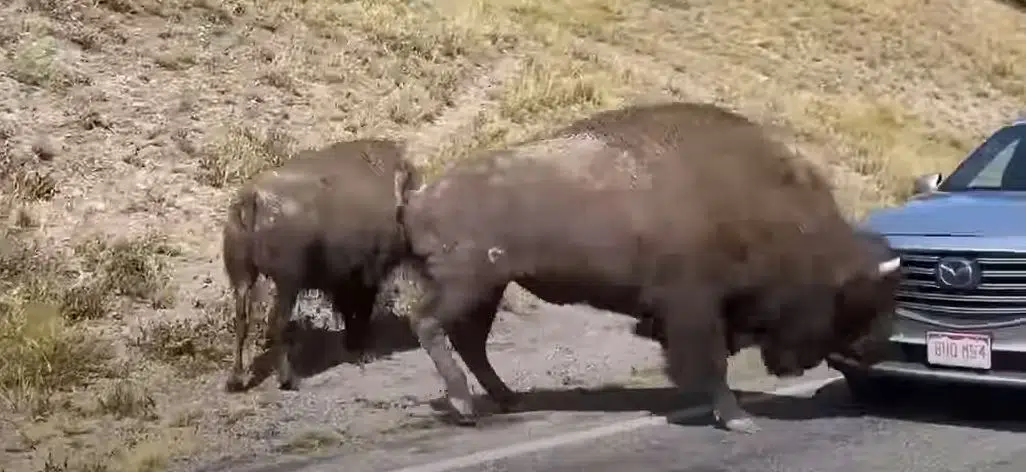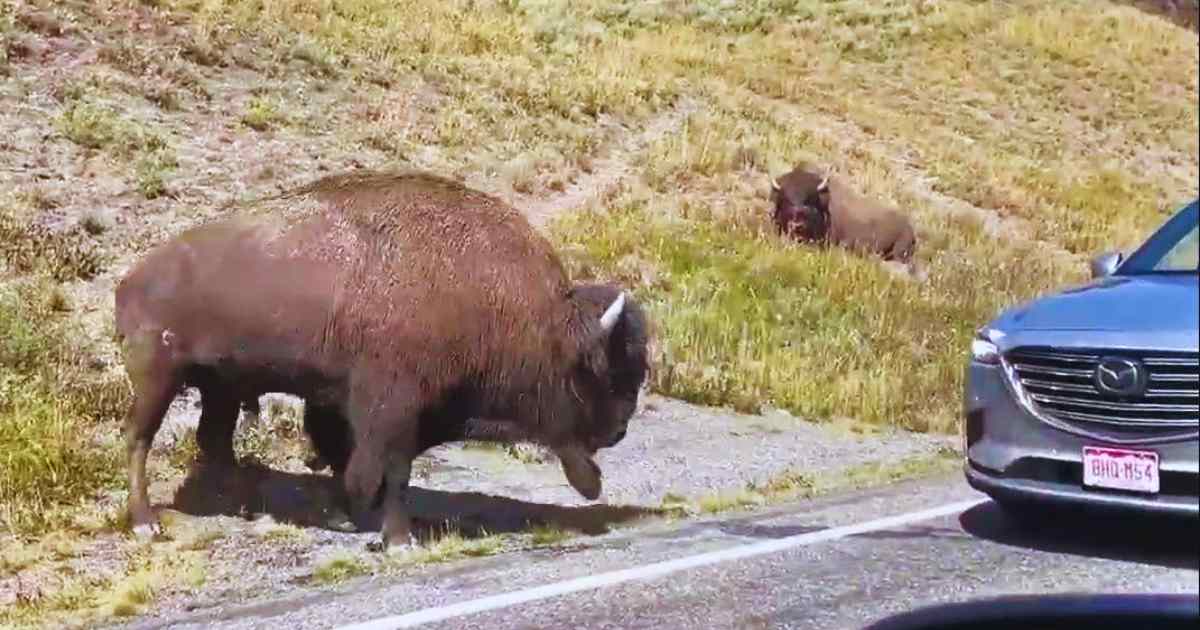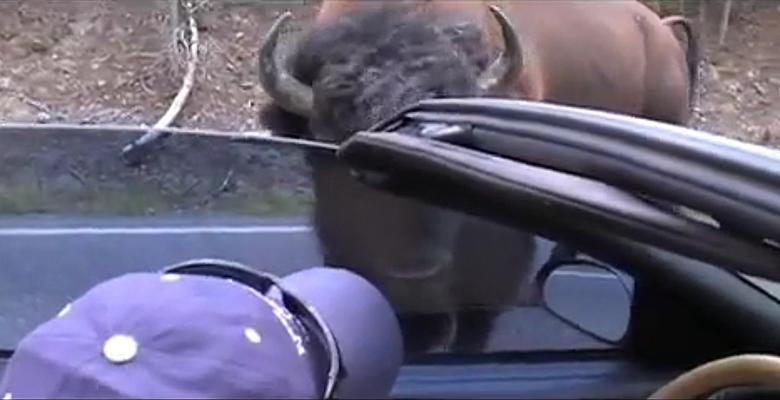The bison is one of North America’s most iconic animals, embodying both the rugged spirit and untamed beauty of the continent’s wild spaces. Recently, a viral video from Yellowstone National Park has reminded everyone just how powerful—and unpredictable—these creatures can be. When a vehicle crept too close, a grumpy bison responded with a forceful headbutt, leaving the car damaged and the internet buzzing.
This incident is more than just a dramatic wildlife encounter caught on camera. It’s a wake-up call about how we interact with nature and the crucial need to respect the boundaries of wildlife in their natural habitats.

Bison vs. Car: A Viral Wake-Up Call
The footage, taken by a park visitor, shows a massive bison approaching a car that had slowed down to get a closer look. Without warning, the bison lowers its head and slams into the vehicle, causing a noticeable dent and likely startling everyone inside. Moments like this are both awe-inspiring and sobering, showing the raw strength of these majestic animals.
Bison are not only a symbol of the American West, but they’re also a reminder that wildlife is, by definition, wild. While Yellowstone National Park provides a safe haven for these creatures, visitors must remember: this is the bison’s home, not a petting zoo or safari park.
More inspiring stories of resilience and transformation:
Full Story: Man Loses 360 Pounds Naturally—Internet Rallies to Support His Next Step
The Importance of Keeping Your Distance
It’s tempting to get as close as possible for that perfect photo or video, but Yellowstone’s rules are clear: stay at least 25 yards away from bison (and 100 yards from bears and wolves). These distances aren’t just for your safety—they’re about protecting the animals from unnecessary stress and potentially dangerous encounters.
Bison may appear calm or even docile as they graze across the meadows, but they can turn aggressive in an instant—especially during mating season or when they feel threatened. Each year, injuries and property damage occur because visitors get too close, underestimating the power and unpredictability of these animals.
Yellowstone’s rangers and conservationists work tirelessly to promote education and rescue efforts when humans or wildlife are in danger, but prevention is always the best approach.

Curious what everyone’s talking about? Check out:
Tammy Hembrow’s Bikini Photos Are Stirring Controversy—Here’s Why Everyone’s Talking
Learning From Nature’s Giants
As nature lovers, it’s our responsibility to be stewards, not spectators, when we visit wild places. National parks like Yellowstone are sanctuaries for animals like the bison, elk, bears, and wolves. These spaces exist for the protection and flourishing of wildlife—and for humans to witness their grandeur safely and respectfully.
Here are some simple ways to be a responsible visitor:
-
Observe from a safe distance. Use binoculars or zoom lenses for photos.
-
Never feed or try to touch wildlife. It can disrupt their natural behavior and put both you and the animals at risk.
-
Follow park rules and listen to ranger guidance. They are there to protect both you and the animals.
-
Report injured or distressed animals to park authorities—don’t attempt a rescue yourself.
Conclusion: Wildlife Comes First
The grumpy bison’s headbutt isn’t just a viral sensation—it’s a vital lesson about coexisting with wild animals in their home. Next time you’re in Yellowstone or any other natural park, remember that these creatures deserve our respect and space.
When we put nature and wildlife first, everyone wins—including future generations who will also get the chance to marvel at the power and beauty of the bison.
If you enjoyed this story, you’ll also love:
The Hidden Meaning Behind Princess Diana’s Cannes Gown—A Heartfelt Farewell to Grace Kelly
Science Confirms Kelly Brook’s Perfect Body—But the Real Message Is Bigger Than Beauty



